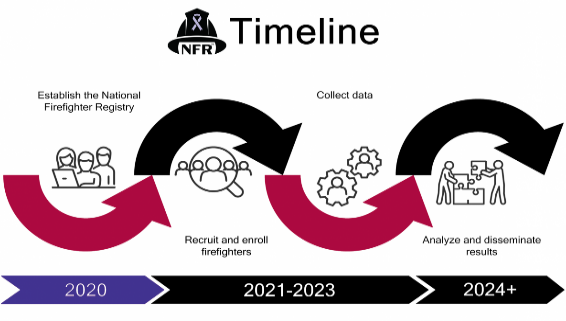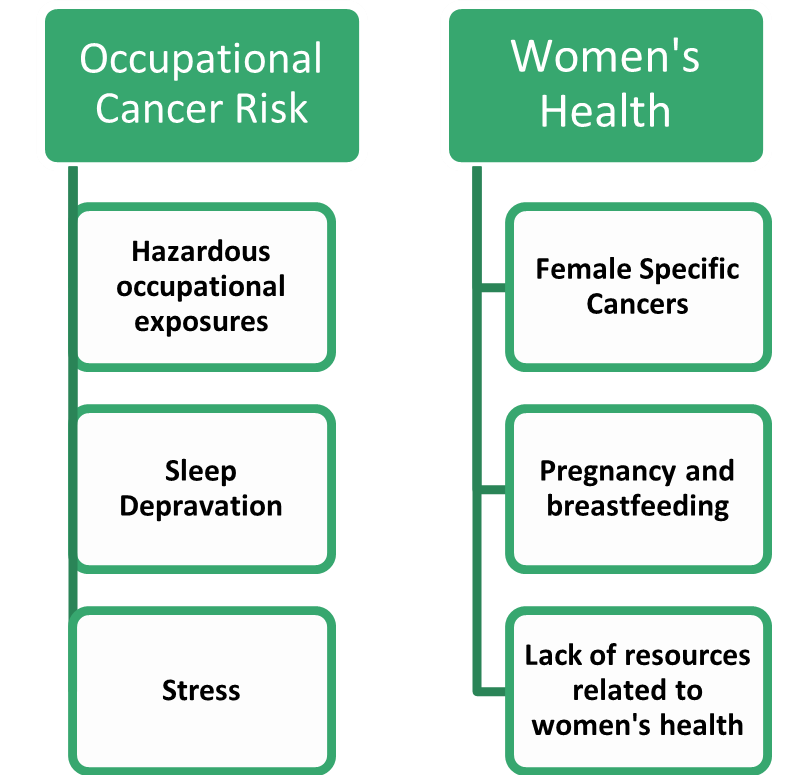Public Safety Program
The National Institute for Occupational Safety and Health (NIOSH) Public Safety Program works with partners in industry, labor, professional and trade associations, academia, and government agencies. The program focuses on the following priority research topics for public safety workers:
- Reducing injuries and deaths from motor vehicles and violence
- Reducing exposures to hazardous substances and infectious diseases
- Improving health and wellness, especially heart health
- Study risk factors, including exposures, that can lead to: cancer, infectious diseases, and heart and respiratory diseases
- Use findings from risk factor studies to recommend prevention strategies
- Approve respirators and conduct post market activities to reduce inhalation hazard exposures
- Manage the National Firefighter Registry, a voluntary registry of U.S. firefighters, to track cancer trends and risk factors
- Lead the development of personal protective equipment (PPE) standards and guidance
- Investigate deaths to understand what caused them and make recommendations through the Fire Fighter Fatallity Investigation and Prevention Program (FFFIPP)
- Increase awareness and knowledge of opportunities to prevent injuries, illnesses, and deaths among public safety workers
- Published article describing associations among firefighters between per- and polyfluoroalkyl substances (PFAS) and epigenetic age. Results indicate PFAS concentrations are associated with accelerated epigenetic age
- Published article on women firefighters’ views of cancer health and safety risks. Results indicate women firefighters lack health and safety resources and are concerned about work-related cancer risk
- Hosted a webinar to discuss research on dermal exposure, epigenetic age, and potential liberation of PFAS from PPE. A commentary was published discussing the webinar and the need for more coordinated events to share information to address challenges of occupational PFAS exposure
- Published article summarizing exposures and acute/subacute health effects among wildland firefighters
- Published article characterizing flame retardant (FR) exposures among residential firefighters. Results indicate firefighters absorbed certain FRs including bis(1,3-dichloro-2-propyl) phosphate (BDCPP) and 2,3,4,7,8-pentachlorodibenzofuran (23478-PeCDF)
- Published an article that described 3D modelling to examine biomechanics of firefighting tasks and an article describing biomechanical modeling for different self-contained breathing apparatus weights
- Evaluate impact of different base layers and tightening turnout gear openings (e.g., neck and waist) on reducing dermal and airborne contaminant exposure among firefighters
- Use Ohio’s workers’ compensation data to describe law enforcement and firefighter workplace injuries
- Produce an online training program to educate law enforcement officers about the health and safety risks related to shift work and working long hours
- Develop training video on row house firefighting tactics
- Assess biological uptake of volatile organic compounds (VOCs) (e.g., benzene, styrene) during residential and training fires
- Evaluate impact of COVID-19 on medical examiner and coroners’ workload and resource needs

Mention of any company or product does not constitute endorsement by the National Institute for Occupational Safety and Health, Centers for Disease Control and Prevention
The Public Safety Program leads efforts to prevent injuries, illnesses, and fatalities among workers in law enforcement, structural and wildland fire service, corrections, and the emergency medical service (EMS). This snapshot shows recent accomplishments and upcoming activities.
To learn more, visit
https://www.cdc.gov/niosh/programs/pubsaf/
September 2022


